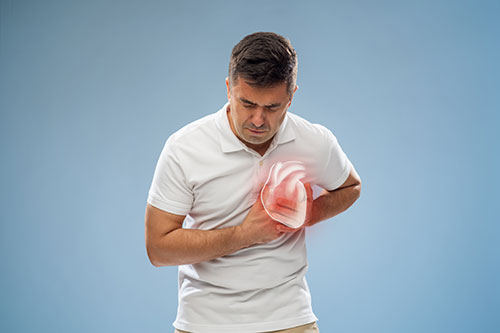Orthopedics and Wellness: How Vitamin C is Thought to Reverse Heart Disease
Fights Depression and Anxiety
I must first give credit to Dr. Linus Pauling, the first major supporter of vitamin C as an everyday health enhancer. Dr. Pauling received the Nobel Prize in Science twice. This discussion is about the power of vitamin C in treating plaquing of the arteries, or clogged arteries.
Clogged arteries are thought to lead to heart attacks and heart disease.
Atherosclerosis is the technical name for the plaquing or clogging of arteries. Arteries are the blood vessels (pipes or conduits) that provide oxygen and nutrition to all of your cells, including the cells of your heart. When your heart does not get enough oxygen and nutrition, or fuel, the muscles get very tired or sometimes die. This is a heart attack, or heart disease.

Plaque deposits line the wall of the arteries. They can only line the walls of a damaged artery. A normal, healthy artery is too strong and the walls are too smooth for a deposit to form. Your body is remarkable and forms these deposits as a way to treat a broken or damaged wall in an artery. Unless the crack is fixed, or plugged with a plaque deposit, blood can break through the arterial wall completely and this would be total disaster. So, the body repairs the arterial walls with a sort of mortar, or plaque. Think of atherosclerosis as a ‘patch’ in the wall.
Vitamin C

Vitamin C is a vital building block for a better way to repair the cracks in the wall. A lot of material in the body is made of collagen, or fiber. Bones, ligaments, tendons and arterial walls all have collagen. Collagen requires a method of manufacturing called ‘cross-linking’. This is the connection between the fiber cells and strands that makes the material strong.
Vitamin C is a critical part of cross-linking in collagen. Therefore, to have good tissue, including arterial walls, you have to have adequate amounts of vitamin C. With the ability to form proper cross-links, the artery walls can self-repair back to a normal configuration without the sloppy deposit type of repair.
Without vitamin C, plaques and deposits are the only way the body has to repair damaged arterial walls. More and more plaques are formed as more and more tears and cracks appear due to the altered flow of blood. This is a cycle of unhealthy events that eventually can lead to a heart attack. Once a thick enough plaque forms, the body will then block that artery with a blood clot, knowing it is too damaged to use for blood flow. The body’s system is trying to help, but the cure will eventually damage you!
In 1954 it was shown that 500mg of vitamin C three times a day made great improvements in the arterial blockages of patients with heart trouble. Vitamin C is also seen as an anti-oxidant. Some people feel that the pharmaceutical industry does not wish for vitamin C to be known as a good treatment for heart disease. However, as a vital part of collagen and a good anti-oxidant, Vitamin C should be part of any heart-healthy regimen.
The usual recommendation is to get all of your vitamins and minerals from your diet. If you are unable to eat enough fruits and vegetables to get the vitamin C, the following regimen is recommended: vitamin C: 6 grams, per day, is needed for heart disease (as per Dr. Pauling). If you take vitamin C with minerals like magnesium and calcium, less may be taken. One of the side effects of too much Vitamin C is diarrhea. Taking Vitamin C in divided doses can help with that. Minerals to think about taking with Vitamin C include zinc and magnesium.
Source: Pauling, L, “How to live longer and feel better”
Dr. Meredith Warner is a board certified, Fellowship Trained Foot and Ankle, Orthopedic surgeon practicing in Baton Rouge, Louisiana. Dr. Warner is committed to offering her patients an accurate diagnosis along with a comprehensive treatment plan in order to get them back to a pain free life. Dr. Meredith Warner specializes in the treatment of orthopedic issues, providing operative and non-operative treatment plans of orthopedic problems, including musculoskeletal pain such as chronic back, neck and foot pain, reconstructive surgery of the foot and ankle, arthritis, diabetic, hammer toe, bunion, wound care, work injuries, fitness and nutrition and osteoporosis issues.






